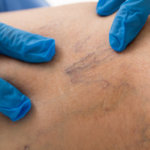
Heel spurs are one of the more common causes of heel pain. A spur is a bony growth created by a calcium deposit that extends between the arch of your foot and the heel bone. Most heel spurs are small, around a quarter of an inch in length, and they are not visible on the surface of the heel pad.
Heel spurs typically start in the front of the heel and spread to other areas of the foot over time. Heel spurs can be challenging to identify, as in many cases, they can present no pain symptoms until the spurs spread to other regions.
Symptoms relating to heel spurs include inflammation of the ankle and heel, as well as pain in the localized area when walking, running, or jumping. It’s challenging to diagnose a heel spur without an X-Ray, and the spur only shows signs of visibility in people with thin heel pads.
Here are the top 8 causes of heel spurs, and what you can do to mitigate the effects of the disorder.
1. Bruising
Long-distance runners place tremendous demands on their feet over the course of their careers. As a result of the intensive training, they run the risk of developing many disorders with their feet. A “stone bruise” is a common injury affecting runners and athletes. The bruise occurs due to trauma to the heel pad, the fatty, fibrous tissue under the heel bone.
The heel pad acts as a shock absorber, protecting the heel bone from the impact of foot-strike in the runners or athletes stride. When a stone bruise occurs, it’s typically because the person sustains a traumatic impact to the heel from jumping, or the heel pad is wearing thin, reducing its protective abilities.
When the heel pad wears thin, and bruising occurs, calcium deposits may start to attach to the heel bone, creating a heel spur. Spurs do not always cause pain, and the runner may be able to continue with their training after the bruising heals.



